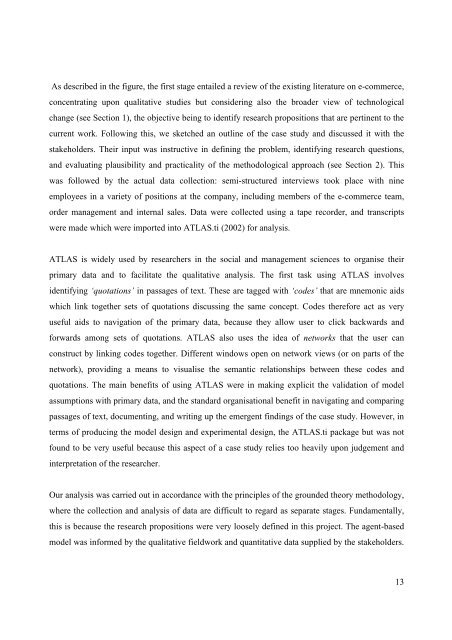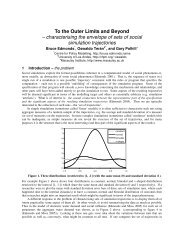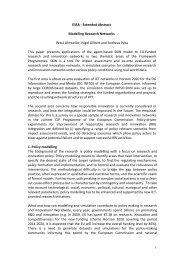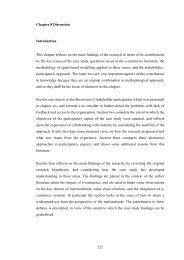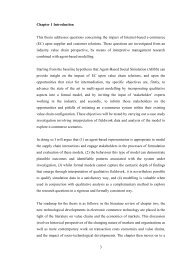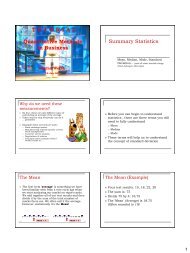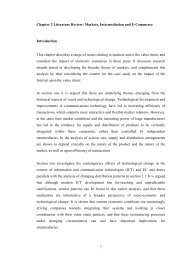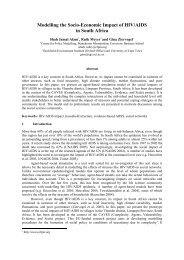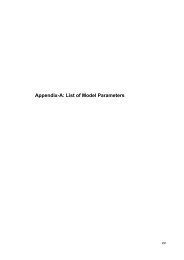1 Agent-Based Modelling Incorporating Qualitative and Quantitative ...
1 Agent-Based Modelling Incorporating Qualitative and Quantitative ...
1 Agent-Based Modelling Incorporating Qualitative and Quantitative ...
Create successful ePaper yourself
Turn your PDF publications into a flip-book with our unique Google optimized e-Paper software.
As described in the figure, the first stage entailed a review of the existing literature on e-commerce,<br />
concentrating upon qualitative studies but considering also the broader view of technological<br />
change (see Section 1), the objective being to identify research propositions that are pertinent to the<br />
current work. Following this, we sketched an outline of the case study <strong>and</strong> discussed it with the<br />
stakeholders. Their input was instructive in defining the problem, identifying research questions,<br />
<strong>and</strong> evaluating plausibility <strong>and</strong> practicality of the methodological approach (see Section 2). This<br />
was followed by the actual data collection: semi-structured interviews took place with nine<br />
employees in a variety of positions at the company, including members of the e-commerce team,<br />
order management <strong>and</strong> internal sales. Data were collected using a tape recorder, <strong>and</strong> transcripts<br />
were made which were imported into ATLAS.ti (2002) for analysis.<br />
ATLAS is widely used by researchers in the social <strong>and</strong> management sciences to organise their<br />
primary data <strong>and</strong> to facilitate the qualitative analysis. The first task using ATLAS involves<br />
identifying ‘quotations’ in passages of text. These are tagged with ‘codes’ that are mnemonic aids<br />
which link together sets of quotations discussing the same concept. Codes therefore act as very<br />
useful aids to navigation of the primary data, because they allow user to click backwards <strong>and</strong><br />
forwards among sets of quotations. ATLAS also uses the idea of networks that the user can<br />
construct by linking codes together. Different windows open on network views (or on parts of the<br />
network), providing a means to visualise the semantic relationships between these codes <strong>and</strong><br />
quotations. The main benefits of using ATLAS were in making explicit the validation of model<br />
assumptions with primary data, <strong>and</strong> the st<strong>and</strong>ard organisational benefit in navigating <strong>and</strong> comparing<br />
passages of text, documenting, <strong>and</strong> writing up the emergent findings of the case study. However, in<br />
terms of producing the model design <strong>and</strong> experimental design, the ATLAS.ti package but was not<br />
found to be very useful because this aspect of a case study relies too heavily upon judgement <strong>and</strong><br />
interpretation of the researcher.<br />
Our analysis was carried out in accordance with the principles of the grounded theory methodology,<br />
where the collection <strong>and</strong> analysis of data are difficult to regard as separate stages. Fundamentally,<br />
this is because the research propositions were very loosely defined in this project. The agent-based<br />
model was informed by the qualitative fieldwork <strong>and</strong> quantitative data supplied by the stakeholders.<br />
13


